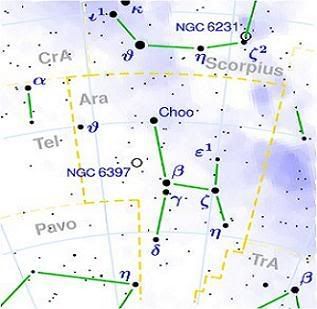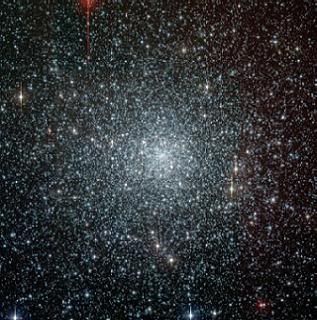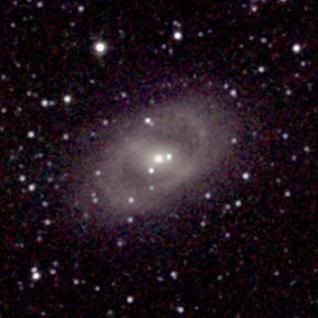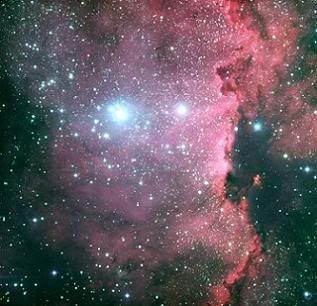Post by glactus on Feb 17, 2008 10:53:56 GMT

Ara the Alter, is a southern constellation situated between the constellations Scorpius and Triangulum Australe. In mythology, the altar, usually depicted upside down, but sometimes upright with the smoke drifting into the Milky Way, was identified as that of the centaur Chiron; its original Latin name was Ara Centauri. It was also occasionally called the altar of Dionysus.
Notable stars:
Alpha arae:
Laying about 300 light years from the sun, Alpha Arae is the closest menber of the class of active stars known as "Be" stars. "Be" stars are very massive, luminous and hot stars that rotate rapidly. Alpha Arae is 10 times the mass of the sun and 6,000 times more luminous. Magnitude is 2.95
Beta Arae:
Beta Arae, an orange class K (K3) supergiant, is at a distance of about 600 light years, and is the brightrest star in the constellation with a magnitude of 2.9
Gamma Arae:
Gamma Arae is a binary star approximately 1,140 light years from Earth and has just left the "main sequence" of hydrogen-fusing dwarfs. Magnitude is 3.31
Notable objects:

NGC 6397
The globular cluster NGC 6397 contains around 400,000 stars and is found some 7,200 light years from Earth. The stars of globula clusters are among the oldest objects in the Milky Way, and hold the nuclear relics of the Big Bang. Magnitude is 4.7

NGC 6188:
NGC 6188 is an interstellar carnival of young blue stars dotted thruought the nebula's hot red gas, and cool dark dust. Located 4000 light years away in the disk of our Galaxy. It is home to the Ara OB1 association, a group of bright young stars whose nucleus forms the open cluster NGC 6193. Magnitude is 7.8

NGC 6300:
NGC 6300 has gas rings that are striking. The gas clearly feels the same resonant effects as the stars, accumulating near the rings and being swept out to other regions. Distance from us is 45 million light years and the magnitude is 10.1.

NGC 6193:
NGC 6193 consists of the bright blue-white stars at the left and center of this image. The red glow that pervades the field is emission in the H-alpha line of hydrogen. THe distance from us is 4,300 light years and magnitude is 5.3.

A Pulsar
credits:
ara map: wikipedia
en.wikipedia.org/wiki/Ara_(constellation)
NGC 6300: sonoma
xmm.sonoma.edu/gallery/2001/NGC6300/otherimages.html
NGC 6188:NASA
apod.nasa.gov/apod/ap990825.html
NGC 6397:physicsweb
physicsweb.org/articles/news/10/8/7/1/060807
NGC 6193: Daviddarling
www.daviddarling.info/encyclopedia/N/NGC_6193.html


